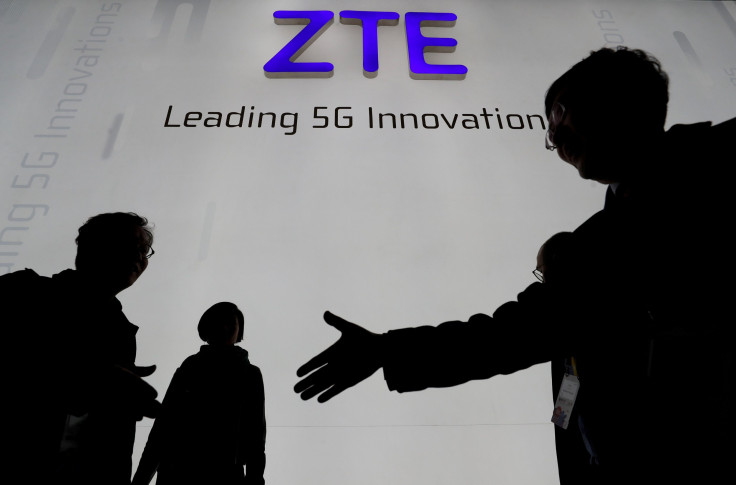Rules-Based Trade Made The World Rich, Trump’s Policies May Make It Poorer

Nations sell goods and services to each other because this exchange is generally mutually beneficial.
It’s easy to understand that Iceland should not be growing its own oranges, given its climate. Instead, Iceland should buy oranges from Spain, which can grow them more cheaply, and sell Spaniards fish, which are abundant in its waters.
That’s why the explosion in free trade since the first bilateral deal was penned between Britain and France in the mid-1800s has generated unprecedented wealth and prosperity for the vast majority of the world’s population. Hundreds of trade agreements later, the United States and several other countries established an international rules-based trading system after World War II.
But now the U.S., which has played an integral role in bolstering this system, is actively trying to subvert it. At the recent G-7 summit in Quebec, for example, the Trump administration objected to even referring to a “rules-based international order” in the official communique – and the president ultimately refused to sign it.
My research in international economics tells me that trade policy – because it is inherently forward-looking and global – requires three interrelated attributes to be successful: It needs to reduce uncertainty, ease long-term decision-making, and be legal and credible.
President Donald Trump’s recent trade policy fails all three tests.
Birth of modern free trade
Britain and France signed the first post-Industrial Revolution trade agreement, dubbed the Cobden-Chevalier treaty, on Jan. 23, 1860.
In it, both countries agreed to either reduce or eliminate import barriers and grant the other most favored nation status, which means any trade concessions offered to another nation would automatically apply to them as well.
Within just 15 years, various countries inked 56 more bilateral treaties. Thus began the first wave of globalization, which lasted from 1870 until 1914, the beginning of two destructive world wars.
From those ruins emerged a rules-based international trading system, known as the General Agreement on Tariffs and Trade, or GATT, which came into force in 1948. Its goal was to eliminate the kind of harmful trade protectionism that had sharply reduced global trade during the Great Depression with the aim of quickly restoring the global economy’s health after so much devastation.
Almost a half century of negotiations to improve the agreement culminated in the creation of the World Trade Organization in 1995. The lynchpin of the modern rules-based international trading system, the WTO now includes 164 nations that together conduct more than 96 percent of the world’s trade.
Three key attributes
This system has worked so well for so long because the WTO and its biggest champions, such as the U.S., made three interrelated attributes integral to their trade policies. That is, its members:
- reduced uncertainty by creating predictable trade policies
- created an environment that facilitates decision-making – particularly in the long term – by consumers and producers
- placed credible and legal directives that are clearly understood by allies and by those who are not.
Even though the U.S. played a salient role in the creation of both the GATT and the WTO, Trump’s trade policy has not followed these guidelines. To me he seems more interested in wreaking havoc with the current global trading system than with ensuring its continued viability. And he’s frequently – and very recently – intimated that he might even withdraw the U.S. from the WTO.
Trump seems to think that by issuing tariff threats, being unpredictable, and viewing foreign countries – even allies – as rival businesses he can extract concessions from trading partners. Instead, such tactics are proving to be counterproductive.
Sowing uncertainty
Perhaps more than anything else, Trump’s policies have created a lot of uncertainty among U.S. trade partners.
His steel and aluminum tariffs are a case in point. In March, the administration announced across-the-board tariffs on imports of the metals of up to 25 percent to punish nations – particularly China – for subsidizing their own industries and dumping their production on U.S. shores.
After key allies including Canada, the European Union and Mexico complained, the administration granted some countries temporary exemptions to the tariffs. But just a few months later, on May 31, it reversed course and began to impose the tariffs on those countries as well, leaving heads spinning. Only a week later, at the G-7, Trump was threatening to cut off all trade with his counterparts one minute, suggesting that everyone eliminate all tariffs the next.
Another recent example of fostering uncertainty is the curious case of the Chinese phone manufacturer ZTE. In March 2017, Trump’s Commerce Department fined ZTE US$1.19 billion for violating U.S. sanctions law by selling technology containing U.S. components to Iran and North Korea. This past April, the agency said ZTE was still violating U.S. law and barred American companies – most importantly chip-maker Qualcomm – from selling anything to ZTE, which led to an announcement that it was shutting down less than a month later.
Within days, however, Trump appeared to have an abrupt change of heart and tweeted that he and Chinese President Xi Jinping were working getting ZTE “back into business, fast. Too many jobs in China lost. Commerce Department has been instructed to get it done!”
Flip-flops like these make it hard for trade partners to predict what the U.S. government is going to do, breeding enormous uncertainty.

Decision-making
Consider the situation faced by an American businessman who produces high-level industrial equipment that is exported to many countries around the world.
His company’s equipment is made using aluminum and steel and, as a result of Trump’s new tariffs, this businessman will have difficulty predicting what the cost of the metals will be in the future. This will have clear implications for the pricing of his products. In addition, if the U.S. gets into a trade war, this businessman will also not know whether some or all foreign buyers might look elsewhere for similar but cheaper alternatives.
Such thinking affects not just individual business people but also companies.
Far from hypothetical, companies are already warning about this. Ford and Toyota North America have both complained about the negative impacts of Trump’s metals tariffs on costs and on the ability to make sound investment decisions.
Act credibly and legally
Trump’s steel and aluminum tariffs have also raised questions about their legality and credibility.
German Chancellor Angela Merkel and French President Emmanuel Macron have both asserted that these tariffs are illegal. As such, the European Union has filed a suit against the U.S. at the WTO. It’s unclear whether the American national security justification will sway the WTO judges.
Prime Minister Justin Trudeau, who was the target of a post-G-7 Trump tweetstorm, has wondered how Canada could possibly be a national security threat to the U.S. Even Defense Secretary James Mattis is reported to have pointed out the implausibility of the national security argument for the tariffs.
This gloomy state of affairs shows that even some of our long-standing friends believe that the Trump administration’s recent actions are illegal and, more generally, that these same allies cannot make head nor tail of the administration’s trade initiatives.
A key lesson
The U.S. is the world’s richest and most powerful nation, in part because of its embrace of a rules-based international order that includes the present treaty-based global trading system.
Rather than build on that success, President Trump’s trade actions thus far have created chaos, which has not led to any noteworthy success either in terms of extracting concessions from trade partners or creating the “great” agreements he touts in his book “The Art of the Deal.”
In negotiating deals, trade or otherwise, Trump seems to like to break all the rules. He needs to learn: That’s not what made America great.
Amitrajeet A. Batabyal is an Arthur J. Gosnell Professor of Economics at the Rochester Institute of Technology.
This article originally appeared in The Conversation. Read the original article here.






















